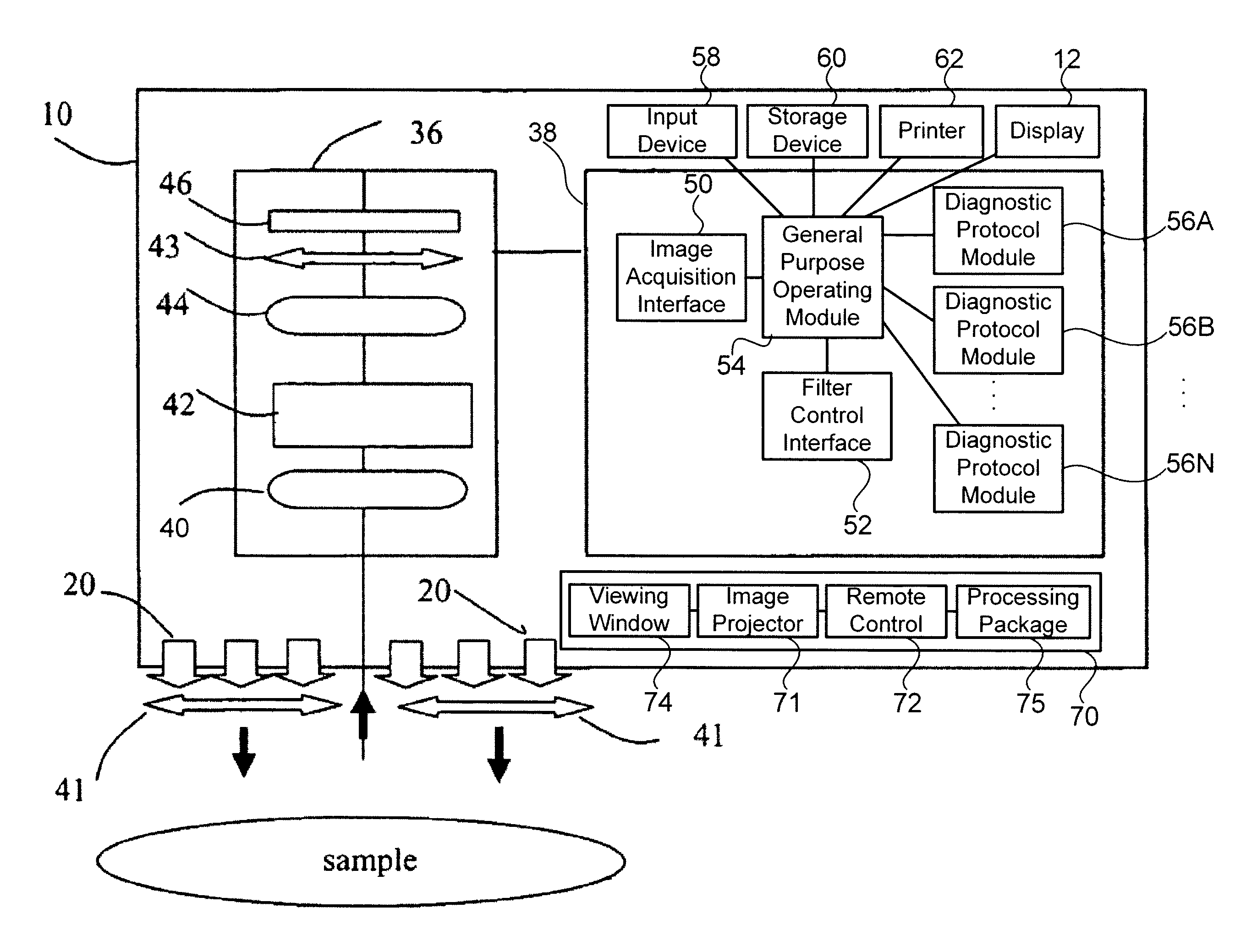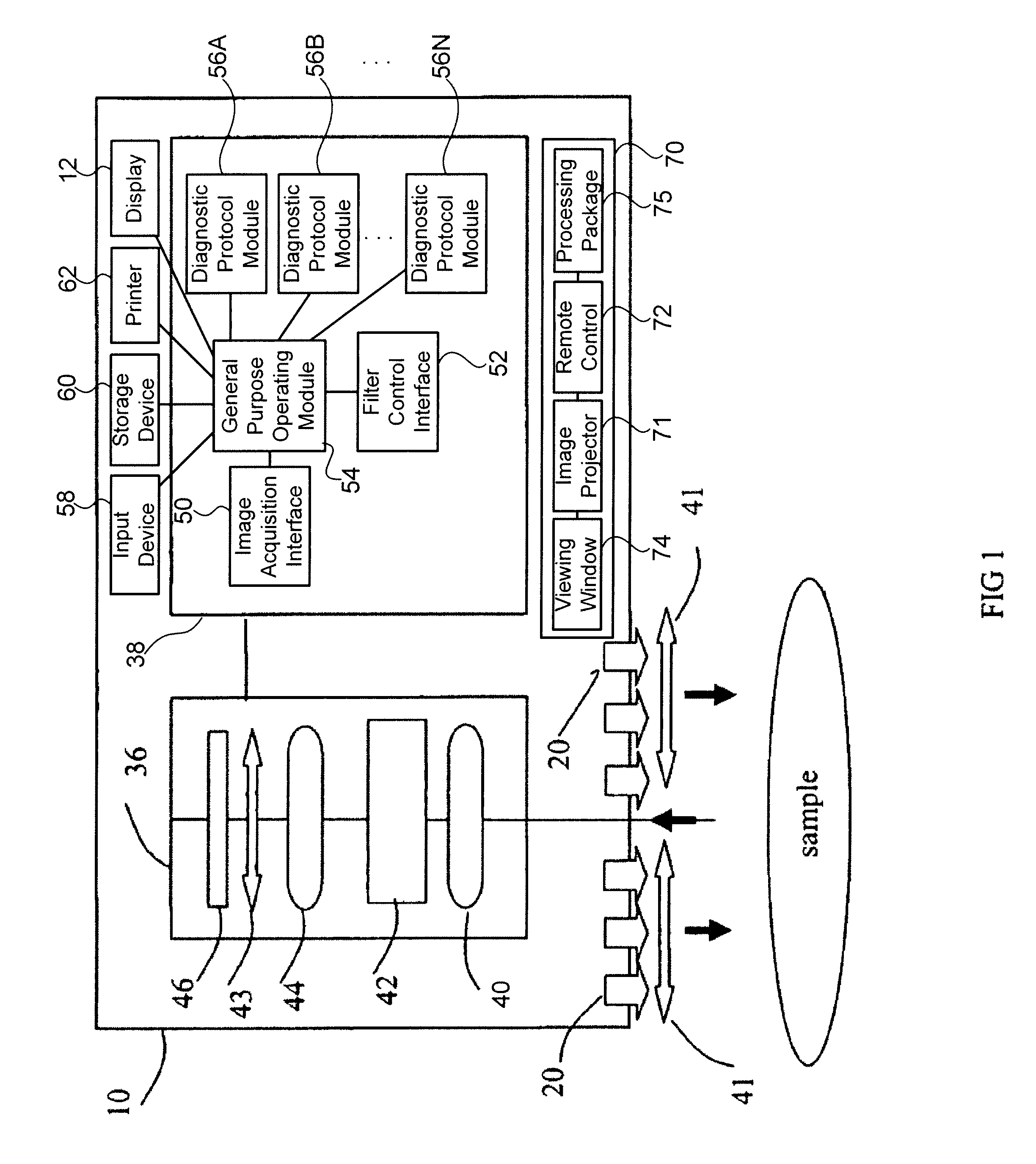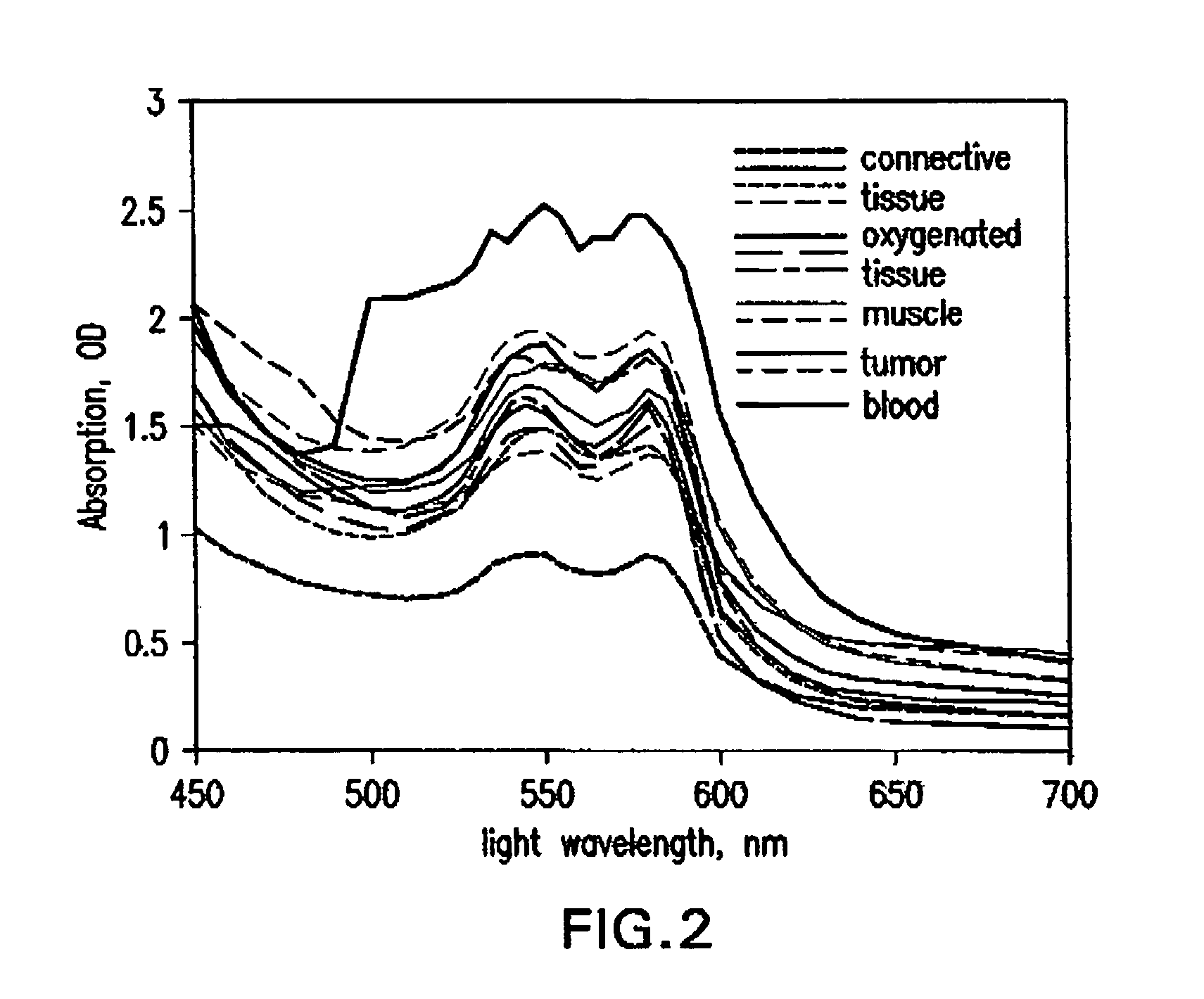Medical hyperspectral imaging for evaluation of tissue and tumor
a hyperspectral imaging and tumor technology, applied in the field of hyperspectral imaging analysis, can solve the problems of not translating into, contributing to significant local morbidity, cost of care and anxiety,
- Summary
- Abstract
- Description
- Claims
- Application Information
AI Technical Summary
Benefits of technology
Problems solved by technology
Method used
Image
Examples
Embodiment Construction
[0052]It has surprisingly been discovered that tissues can be assessed specifically for the detection of cancer or tumor beds during surgical excisions. In the present invention, new methods and tissue specific algorithms are presented that allow the assessment of tissue viability specifically to the detection of cancer, or tumor beds during surgical excision. Cancer detection can include the detection of solid cancers and precancers, and blood borne cancers such as lymphoma. Cancer detection can also include differentiating tumor from normal tissue and assessing the malignancy or aggressiveness or “grade” of tumor present. One problem is that often (e.g. during surgery) it is necessary to assess the tissue composition and oxygenation over a large area and in real or near-real time.
[0053]MHSI solves that problem by processing the hyperspectral cubes in near real-time and presenting a high-resolution, pseudo-color image where color varies with tissue type ...
PUM
 Login to View More
Login to View More Abstract
Description
Claims
Application Information
 Login to View More
Login to View More - R&D
- Intellectual Property
- Life Sciences
- Materials
- Tech Scout
- Unparalleled Data Quality
- Higher Quality Content
- 60% Fewer Hallucinations
Browse by: Latest US Patents, China's latest patents, Technical Efficacy Thesaurus, Application Domain, Technology Topic, Popular Technical Reports.
© 2025 PatSnap. All rights reserved.Legal|Privacy policy|Modern Slavery Act Transparency Statement|Sitemap|About US| Contact US: help@patsnap.com



